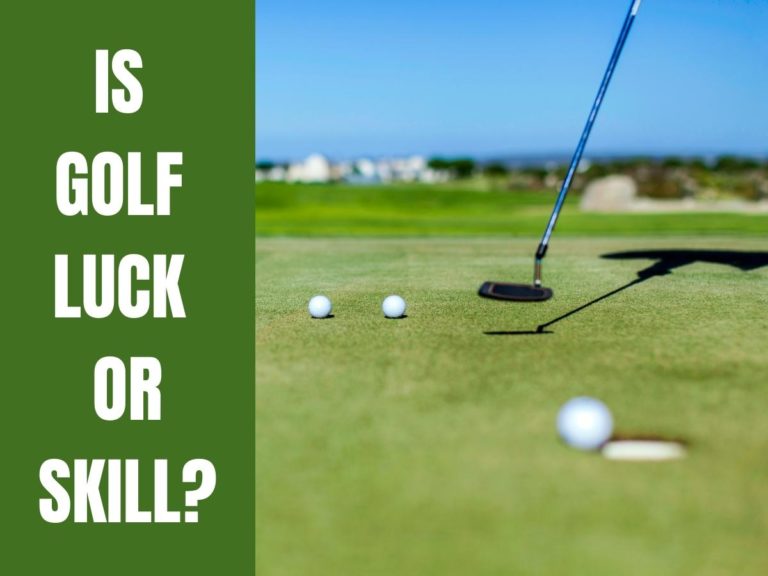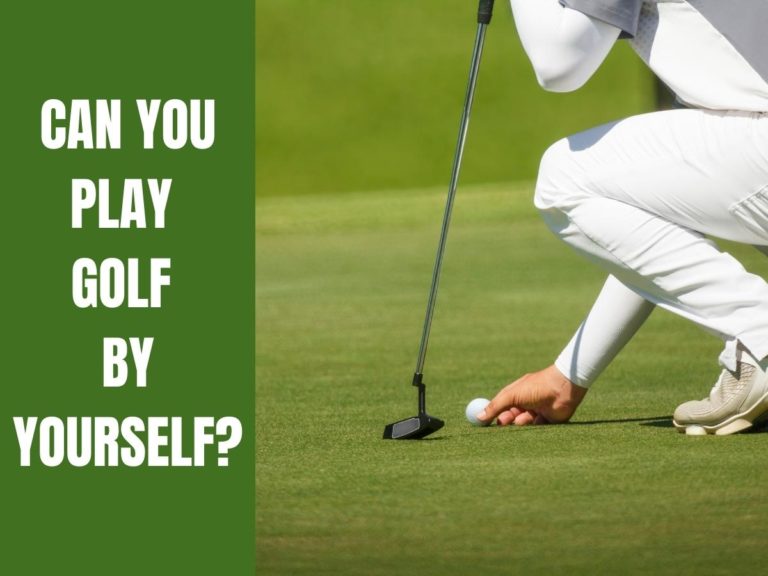5 Reasons Golf Is Classed As Exercise
When people look at golf compared to other sports like baseball, football, or hockey, it hardly seems that it could be classed as exercise, but the opposite is true. Playing a round of golf or a session at the driving range will get your heart rate up and get you breathing, and those two signs indicate exertion and therefore exercise.
Here are 5 reasons why golf is classed as exercise:
- Golf provides cardiovascular exercise.
- Golf improves balance and coordination.
- Golf improves concentration.
- Golf incorporates strength training.
- Golf improves your metabolic profile.
Let’s look at the muscular and physical exertions involved in playing golf, how many calories you could burn, whether walking or riding a golf cart, and what other health and exercise benefits the game offers.

How Is Exercise Defined?
Sitting on your couch in front of your TV and watching golf while eating potato chips does not classify as exercise. Period. Now that we have resolved that, we can move on to what does represent exercise.
Continued or prolonged sessions of physical movement (like walking, running, skiing, swimming) or resistance activity like weight training are all classified as exercise.
The standard rule for walking is to get in your 10,000 steps or approximately three miles of walking at least three times per week, if not more.
Exercise burns calories as your heart rate increases and oxygen and muscle fuel are burned up during the activity. If you are breathing hard and sweating during or after the activity, you are exercising.
When you play golf, you sweat and breathe hard, and while using a cart does decrease the amount of walking, you still burn calories. So, under the definition of exercise, golf is classified as exercise.
Is Golf Classed As Exercise?
Golf is classed as exercise, and while walking the golf course is better in terms of calories and cardiovascular results; using a golf cart also burns calories. Golf works the muscles in the body while swinging, walking, and the core muscles used for balancing.
A recent study of the relationship between golf and health conducted by the British Journal of Sports Medicine concluded that “golf can provide moderate intensity physical activity.”
Scientists also found that golf improves wellness and has physical health benefits, including greater cardiovascular, respiratory, and metabolic profiles.
Golf is a sport, and there can be injuries in any sport or form of exercise. However, the same study also found that the number of golfing injuries is moderate, with back injuries most common.
Golf combines several physical and mental elements that contribute to the exertion of effort during the game and use a good variety of muscles, including your brain.
Let’s dive into all the reasons why golf is classified as exercise.
1. Golf Provides Cardiovascular Exercise
Cardiovascular exercise comes down to one element in golf – walking. Walking around 5 miles during a round (or more depending on how well you play) is the most significant single aspect of exercise in golf.
It’s always better to walk and either carry your bag or use a pushcart rather than drive a golf cart. You might ask how riding in a golf cart can be exercise, and obviously, the riding part isn’t.
But, there are places where the golf cart cannot go, and there, you would need to walk, and those little walks all add up over the round. Walking up and down hills and flats builds leg and core strength and burns calories.
Golfers have superior lung function than non-golfers. Any form of exercise is beneficial for your health as it can help prevent chronic diseases like heart disease, type 2 diabetes, stroke, and certain cancers.

2. Golf Improves Balance and Coordination
Swinging a golf club requires balance, whether on a flat or uneven surface.
Balance is one of the most overlooked parts of golf training and improvement, but it is crucial for a solid, consistent swing. Good balance requires various parts of your body systems to work together; your muscular, visual, and proprioceptive systems.
If you practice balance exercises off the golf course, improved balance on the course will also impact the accuracy and power of your golf swing.
You also need your core and glutes (butt), quadriceps, lower back, and abdominal muscles for good balance, and swinging a golf club 80-100 times or more during a round certainly works for those muscle groups.
The more you play, the more developed these muscle groups become, contributing to the overall calorie burn during the round.
3. Golf Improves Concentration
Golf as a sport is as much a mental game as it is a physical one from a calculation standpoint but also a focus and concentration aspect. Using your brain to look at putting lines, assess wind direction, and remember score numbers and yardage figures burn calories.
Brainpower also helps reduce the risks of diminishing mental capacity as you get older. So, get yourself to a golf course if you want to reduce the risk of degenerative mental conditions and memory loss!
Golf also improves your mental health as you are away from the stresses of everyday life, are in wide-open spaces, and take in lots of fresh air.
4. Golf Incorporates Strength Training
What? Really? Yes. Swinging a golf club is classified as strength training, and even though the club doesn’t weigh much, it does weigh something. The action of swinging the club uses many muscles groups in the body.
Arms, shoulders, back, and the big muscles in the hips and butt, quads and calves all need to work to swing the golf club.
If you consider the actual number of swings, including practice swings, you might swing more than double the number of actual shots hit!
Walking and playing from uphill and downhill lies all build strength in the glutes, quads and calves. And if you’ve played a really hilly course, your legs know all about it the following day – who needs a leg day when you have an undulating golf course?
If you are an average golfer, you could swing 80-100 times during a round, and that is an excellent overall exercise for the muscle groups involved.

5. Golf Improves Your Metabolic Profile
I don’t know anyone who wouldn’t want to enhance their metabolic profile. I certainly don’t need any excuse to eat another snack or enjoy a pint of Guinness after a round!
Your metabolism is in charge of converting the calories you consume into the energy your body needs to function. As golf is a form of exercise that provides you with moderate-intensity aerobic activity, studies have shown that it improves your metabolic profile.
Did you know that the type of golf bag you carry can even affect your metabolism?
This interesting study comparing the metabolic cost of carrying a single vs. double strap golf bag found improvements in comfort and metabolic demands while carrying a double-strap golf bag which enhances walking tolerance. This leads me nicely onto the next section.
How Many Calories Could You Burn In A Round Of Golf?
Walking the golf course can burn around 2,400 calories in a round. Playing golf two or three times a week has some real benefits in terms of weight loss and all-around general fitness and wellbeing.
Being out on the fairways and greens in the fresh air and away from electronic devices and the social aspect are all healthy and beneficial – even when the scores are poor!
If you are using a golf cart, that number of calories would be around the 1,300 calorie mark, and even that is better than nothing and still a good number to burn.
The benefits of golf carts are that they allow people to play the game who have physical difficulty walking for so long but reap the benefits of short walks and swinging the club.
Plus, it allows people to play the game well into old age, while other more active sports would not be possible.
Final Thoughts
There is no doubt that golf is exercise. It is exercise for the body and the mind, making it one of the optimum choices for all-around wellness for all age groups. It is also a great social activity.
In this day and age, any exercise is better than none, and playing a round of golf or doing a session at the range meets all the requirements to be classified as exercise.
The next time you play, take your phone with you and see how many steps and how many calories you burn – that may give some comfort and satisfaction, even if your score doesn’t!






